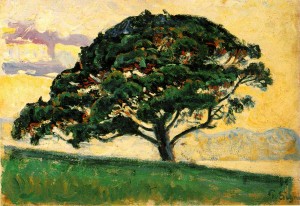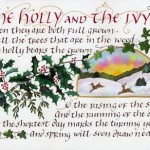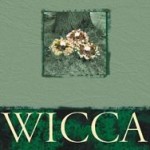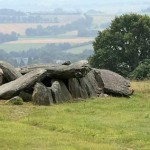At times I feel as if I am spread out over the landscape and inside things, and am myself living in every tree, in the splashing of the waves, in the clouds and the animals that come and go, in the procession of the seasons.
–Carl Gustav Jung, Memories, Dreams, Reflections. London: Fontana Press, 1995 ed., p. 252-253.
As Pagans, we are the people of the countryside – the pagus in Latin. Our deities originate in the natural world. They are elemental deities – gods and goddesses of earth, sea, sky, sun, moon and star. They are vegetation deities of the greening of the land with spring and deities of later agricultural societies – the Lord and Lady of the grain. Some are animal deities – horned gods like Herne and Pan, animal deities like the Egyptian cat goddess Bast. The imagery of Paganism is that of the natural world, but the reality of our everyday lives is often far removed from nature. Most Pagans live urban lives surrounded by concrete, tarmac, and city lighting that fades out the stars.
‘The woods have gone away … we are lonely by moonlight’
We can see the roots of the Pagan revival in the reactions of nineteenth century poets, artists, writers and naturalists to the industrialization of the western world. Nearly a century ago, for Irish baron, poet and fantasy writer Lord Dunsany, the destruction of the environment was the wake-up call that brought a longing for the old gods of nature.
It was the voice of the flowers on the West wind, the loveable, the old, the lazy West wind, blowing ceaselessly, blowing sleepily, going Greecewards.
‘The woods have gone away, they have fallen and left us; men love us no longer, we are lonely by moonlight. Great engines rush over the beautiful fields, their ways lie hard and terrible up and down the land.
‘The cancerous cities spread over the grass, they clatter in their lairs continually, they glitter about us blemishing the night.
‘The woods are gone, O Pan, the woods, the woods. And thou art far, O Pan, and far away.’
Lord Dunsany [Edward J. M. D. Plunkett].
‘The Prayer of the Flowers’ in Fifty-One Tales. London: Elkin Matthews, 1915.
We are thirsty for greenness
The natural world is essential for human well-being – physical, psychological and spiritual. Newer sciences such as ecopsychology recognize what Paganism has long accepted – that our psyches are deeply connected to and affected by the world of nature. This is true in many obvious ways. Our moods are affected by the amount of daylight. In winter, we can succumb to seasonal affective disorder (SAD). When it is sunny and our muscles are warm and relaxed, we feel happier. But the psychological impact of the environment is important in other ways too. Our minds, hearts and spirits crave the beauty of the natural world. We thirst for it and feel consciously or unconsciously deprived when we are separated from it. When we are hemmed in by concrete and buildings, we react by feeling alienated, depressed, unhappy. Human alienation is strongest when we are furthest away from the natural environment in which our species developed.
How can we keep alive our connection to nature?
The human desire to reconnect with nature is strong, but when our lives are subject to so many competing demands it is easy to suppress it, or simply not to notice. Even for Pagans it is easy to forget. We can find ourselves leaving our centrally heated houses to climb into our air-conditioned cars to drive to a sabbat in a suburban home to worship the Gods of nature, without ever having contact with the natural world.
Physical work can be an effective way of connecting with our natural selves; particularly when it involves working with what nature provides – the land, and natural materials such as wood, wool and stone. Many of us live lives chained to a computer screen in offices and call centers that offer a pleasanter environment than factories, but that can be equally soul-destroying. The human body is not designed to sit still for long hours. When this becomes our way of life, the diseases of civilization follow – obesity, high blood pressure, diabetes, repetitive strain, backache. When our bodies are constrained and forced to live unhealthily, our energy levels are reduced and we are deprived physically as well as spiritually.
Greening the city, greening the spirit
Few of us can turn our backs on urban life to live off the land, but we can all find ways to engage with the natural world, through gardening, conservation work, or hiking. Most urban areas will have projects and groups that work to green the city, plant trees, create gardens and parks, and clean up rivers. Trees and greenery make an enormous impact on the human psyche; as well as providing clean air that enables us to breathe better, to have greater energy and improved thinking capacity. Tree planting and other environmental work enable us to green the city and green our spirits at the same time. We can all engage with the earth, even if we are house-bound and not fully mobile. Bees can be kept in urban settings and food can be grown indoors – tomato plants, for example, will grow on a window ledge. Growing something to eat for the sabbat is a simple way of engaging with nature.
‘At times I feel as if I am … myself living in every tree’

When I was a child I thought I would die if I could not climb a tree every day. As a teenager I had to give this up, but the connection to trees remains. Trees are part of our archetypal memory, the place where our species first evolved to consciousness from our ape forebears. We sense that connecting with trees is important, and this is as true for adults as for children. The quote above from Carl Gustav Jung’s biography Memories, Dreams, Reflections expresses how he felt in old age, living simply in a stone tower that he had built on the shore of Lake Zürich in Switzerland.
Connecting with a tree
A simple exercise we ask people to do when they start training in Wicca is to find a personal tree and to commune with it over a period of time. It does not have to be an ancient forest oak. It could be a tree in a city park that you can visit at lunchtime. How do you find the right tree? First you walk around your local area to find out what trees are there. Do you know how many different species grow in your neighborhood? Do you know the names of them? If not take some photographs and maybe a sample leaf, and use these to identify the species around you.
Once you find a tree you like, stand near it and observe the movement of its leaves in the wind, the sound of the wind among its branches, the song of the birds. If you feel drawn to it, approach it. If not, find another to observe until you find the right tree. Then touch the tree’s trunk. Place the palms of your hands against it. How does it feel? Close your eyes and sense the energy in the tree. Is it dormant, or is its sap pulsing with the life of spring? Notice what your body feels. Allow your psyche to merge a little with the tree. How does it feel to be rooted deep in the earth and drawing nourishment from sun and rain? If it feels right, draw energy from the tree. Feel its powerful energy flowing into you. Its time-span is longer than ours; its pace is slower. It has seen much, absorbed much, endured much. There is much we can learn from our tree. If we visit it for a seasonal cycle, we will see the messages of the sabbats in its seasonal changes, and this can be just as powerful as ritual practice.
Read this article in French, Italian, Polish, Russian, or Spanish!
















